In the ever-evolving world of science and technology, certain phenomena continue to captivate the minds of scientists, artists,…
Researchers Observe a Hallmark Quantum Behavior in Bouncing Droplets – Technology Org
In a study that could help fill some holes in quantum theory, the team recreated a “quantum bomb…
Riding Sound Waves in the Brain – Technology Org
ETH Zurich researchers have shown for the first time that microvehicles can be steered through blood vessels in…
LIFT Program helps Cambridge youth become tomorrow’s changemakers
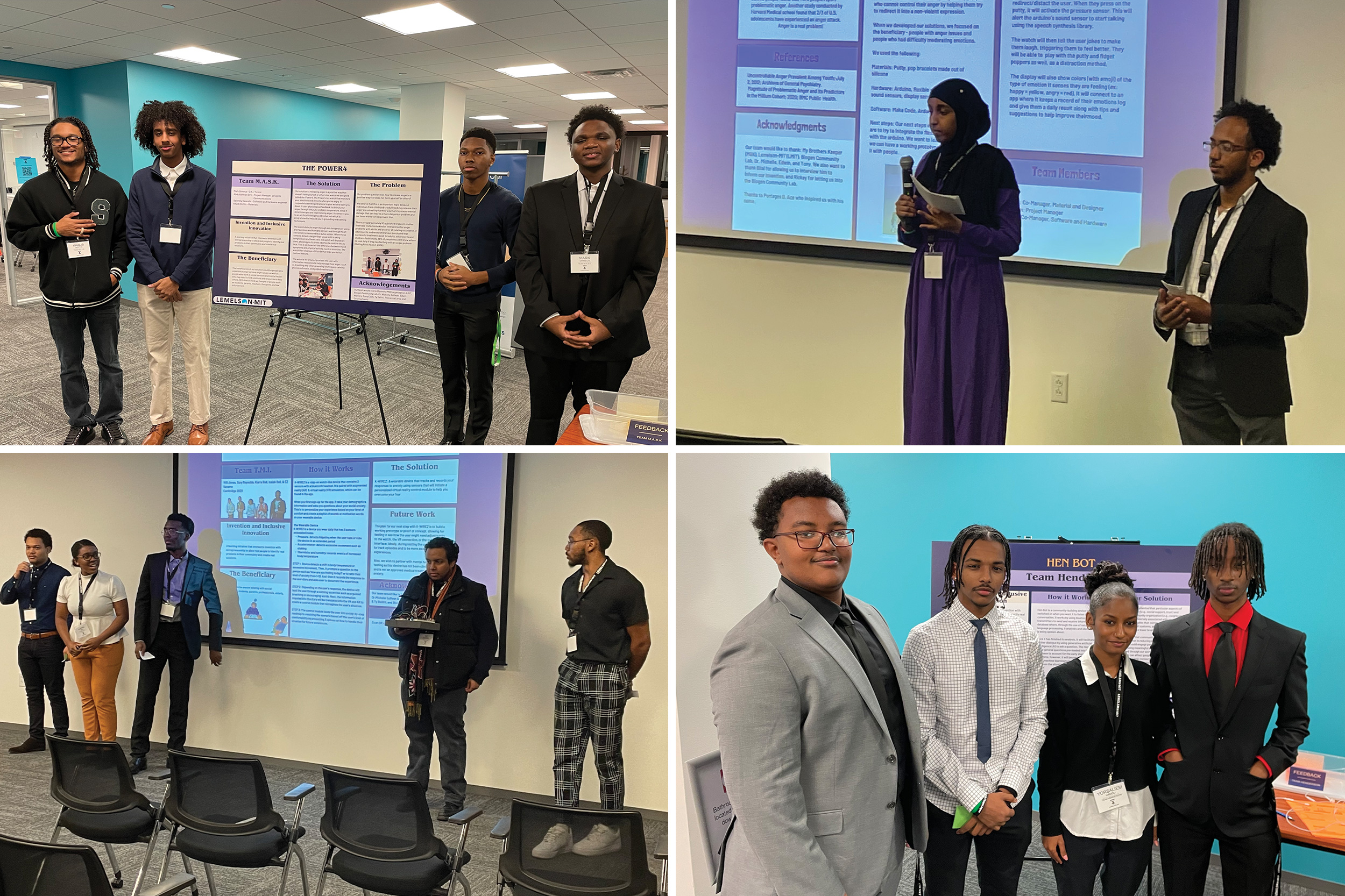
On Nov. 29, a team of young adults stood in front of a crowd at The Link coworking space in Kendall Square, Cambridge, Massachusetts, and presented their idea for a smart, watch-like device that monitors a user’s vitals for signs of anger and prompts them with guided breathing exercises. The device would also connect via Bluetooth to a virtual reality headset that could lead the user through conflict resolution scenarios.
Such high-tech presentations are common in Kendall Square, but the presenters weren’t a team of PhD students — they were local Cambridge youth working as part of the Lemelson-MIT Program’s Leaders Inventing the Future Together (LIFT) initiative.
In collaboration with My Brother’s Keeper (MBK) Cambridge, the LIFT program offered 18- to 24-year-old local residents an intensive, six-week course covering invention, technology, and entrepreneurship. The program worked in conjunction with MBK’s curriculum on mental health coaching and challenged participants to create solutions for problems they see in their community.
“We’re trying to bring inclusive invention and innovation into our community, especially for people who are traditionally kept out of these kinds of spaces,” Lemelson-MIT Project Facilitator Michelle Sullivan said at the final pitch event. “They also just have really good ideas, and the Cambridge community is our backyard. While we’re working nationwide, we want to be a part of the local community.”
For MBK Cambridge, a nonprofit that supports local youth and parents, the partnership offered an opportunity to tap into MIT’s innovation resources and ecosystem.
“One of MBK’s goals is to provide a springboard to the 21st-century economy,” MBK Cambridge Co-president Ty Bellitti says. “So many of our young people in Cambridge are extremely dynamic, but we’re not 100 percent sold that a traditional academic setting brings out their genius. Having Kendall Square just a stone’s throw away from where these young people are growing up, it’s only right that they have access to not only buildings, but the ideas being exchanged within these buildings.”
Many of the participants said that exposure has changed the way they think about their careers.
“I wasn’t sure what to expect, but working with MIT has been amazing,” Cambridge resident Khalib Dollin Dottin said. “I’ve been hearing about this school my entire life. Being able to work with them has been a pleasure.”
A program with a purpose
The collaboration began when Tony Clark, the other co-president of MBK, worked with Lemelson-MIT in the spring as part of a program with local high school students.
“Tony would come tell me about it every week,” Bellitti recalls. “He was saying, ‘What these kids are doing is incredible. It’s really opening their mind to the possibilities of invention.’”
MBK was already planning a mental health coaching program this fall, so it teamed up with Lemelson-MIT to incorporate a curriculum on inventing technologies to help with mental health.
On Tuesdays and Thursdays from 6 to 9 p.m., Lemelson-MIT would work with the students, equipping them with skills like identifying a problem, prototyping, and getting feedback, and on Wednesdays MBK would conduct its mental health coaching program.
“Learning about mental health can be challenging because you’re learning about your own mental health and where you stand with anxiety and depression, and often times things pop up for you because you see it in yourself or you see it in friends and family,” Bellitti says. “But it’s also been great watching young people run toward the idea that mental health discussions are important. We’re normalizing those conversations.”
Participants were paid hourly for their participation, which required them to commit several hours toward the work a week. But Clark says it wasn’t about the money. He knows because the week leading up to presentations, participants were calling him late at night to get access to their center to work on their project on the side.
“We couldn’t kick them out,” Clark jokes.
Participants formed teams and Clark says there was a competitive atmosphere. But he was also heartened to see teams come together to help each other through different technical and business problems.
“It was a great opportunity,” said participant Abdul Dirir. “I’ve never had an experience like this, where I’m creating new ideas for society. It was definitely a challenging process, but my team caught on quickly and each day we just got better and progressed.”
Clark and Bellitti have come to see entrepreneurship as a promising career path for their youth.
“There are over 70 companies on the NASDAQ in Cambridge, and they all started with an idea,” Clark says. “When you talk to our young people, you realize their dreams might not be found in a typical job description, so how do they create that pathway for themselves? The recent Cambridge election was all about rent, but these young folks want to own, and part of being an entrepreneur is owning your time. That’s critically important to these young people.”
Beyond the classroom
Toward the end of the program, Bellitti brought participants to Microsoft as part of an effort to expose participants to careers in technology. As they were waiting in the lobby, MBK’s young people were discussing Raspberry Pi circuit boards and Micro:bits. A few were disagreeing over what tech they were going to use to build their drones.
“No matter what we expose our young folks to, they walk in speaking one language and they walk out speaking another,” Bellitti says. “They’re talking about getting access to makerspaces and The Hive [co-working space] and 3D printers to continue on with their inventions. It’s been a beautiful thing to witness.”
Many participants said they would continue working on their projects after the program. Dirir, for instance, came into the program thinking he wanted to be a financial advisor. The program made him think about becoming an engineer and building things to solve problems instead.
“Especially being a person of color, this program made my potential more clear,” Dirir said. “It showed me some missing pieces, like the importance of networking.”
The program focused less on making sure participants become startup founders and more on equipping them with broader skills they can use no matter their career paths. It also aimed to show them that they have what it takes to lead businesses like the ones whose skyscrapers dot the skyline around Kendall Square.
“A lot of these youth want to pursue careers in technology, and this experience has solidified their decision to enter the field,” Bellitti says. “That makes us proud because we want our young people to be in the C suites and to earn a living for themselves that allows them to live a life of their dreams. We’ve got the examples right here in their own city. They don’t have to go far to find it.”
Ransomware: Is it about to go extinct? – CyberTalk
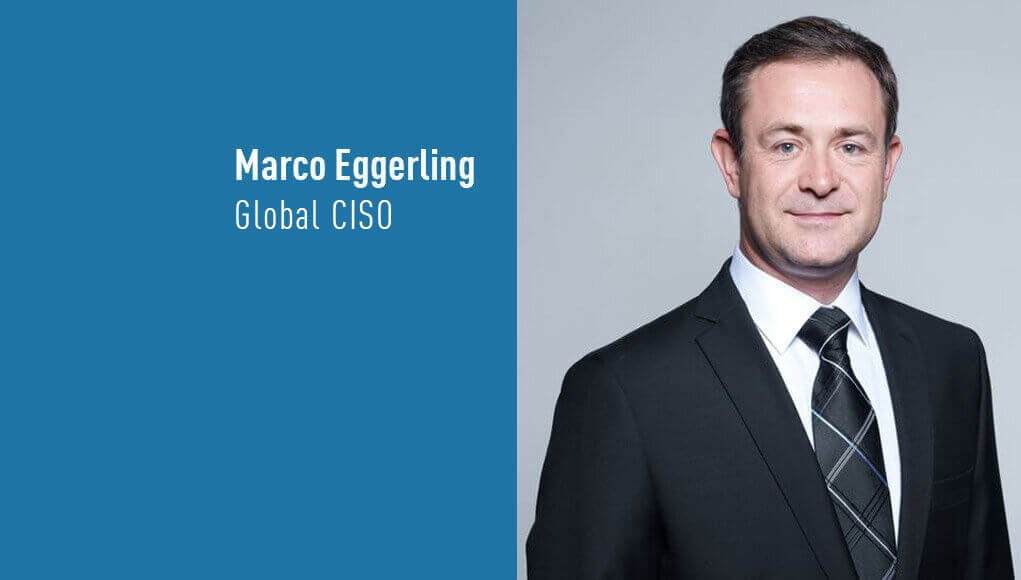
By Marco Eggerling, Global CISO, Check Point Software Technologies.
Regarding ransomware, there’s a big misconception in the industry. The conventional wisdom is that ransomware threats will escalate and that we’ll continue to battle them in perpetuity. However, while millions of ransomware attacks continue to occur annually, last year, ransomware threats actually declined by several percentage points, and more recently, in October of this year, the number of ransomware attacks across several critical infrastructure sectors dipped.
I believe that ransomware is going to die out; it’s about to become extinct – maybe not tomorrow, but within the next few years. What I don’t mean to say, however, is that the global situation will calm down completely and that companies can relax. The war is far from over, but the dynamics are changing. That’s because ransomware gangs have started to shift gears and are focusing on exfiltration of data, and not destruction and chaos. Here’s why:
Rationale for ransomware’s recess
Succeeding against today’s cyber security infrastructure isn’t as easy as it once was. In the cat-and-mouse game that is deployment of threats and development of fresh defenses on the part of cyber security firms, the latter group is winning. Defenses have advanced significantly.
At Check Point, we advocate for a stacked prevention-first approach, and we advocate for this because of very strong reasoning. Point products in isolation work to some extent, but cause complexity and will not offer the same joint visibility as technological defense layers, where individual controls work in harmony with each other. Also, the application of artificial intelligence in conjunction with machine learning or deep-learning algorithms has caused significant advancements on the defender’s side.
As a result, cyber criminals need to continuously create new attack methodologies, in a potentially endless and exhausting cycle. The hackers may only hold out for so long, eventually losing interest in ransomware in favor of simpler and equally lucrative cyber schemes. After all, running attack ops costs money, and if your return-on-invest laterally moves farther out, the business case simply does not make sense any longer. The principals of economics apply for both sides, and this becomes evident in such examples where hacking groups simply give up on their traditional approaches and venture off to new ones. And these ventures explicitly include stealing and selling data.
The recent case of a hacking group calling on a successfully hacked victim by contacting the U.S. Securities and Exchange Commission (SEC) for help goes to show that we have a much different dynamic out there now than previously: Companies seem to not disclose attacks, so the gangs do that on their behalf. Not on the usual darknet wall of shame boards, but by calling the regulators. If this is new for you, let me explain…
Ransomware attackers’ desperation
In the aforementioned example, the ransomware group known by the moniker Alphv and/or BlackCat disrupted digital systems that belonged to a small California-based company. The hackers stole data.
In an apparent attempt to pressure the company to provide ransom payment in exchange for the data, the hackers seem to have filed a complaint with the SEC for failing to disclose the breach within four business days, as newly required by law. The chutzpah (and desperation)!
Ironically, the new SEC breach disclosure rules will not actually take effect until mid-December, thus the hackers may have indeed been a bit over-zealous in their approach (if not wholly out-of-line).
With GDPR, we have similar laws in Europe, although no similar example has surfaced yet, where the perpetrators tried something comparable with a national data protection officer.
Simple tricks to stay out of trouble
As noted earlier, I predict that more traditional ransomware approaches are going to extinguish themselves. Ransomware groups will precipitate their own demise, as running the infrastructure is costly. Thus, they now almost exclusively come for a quick cash-out. The case of MGM has shown the speed at which the teams are operating. The end game is clear as day: getting access to corporate data, and then pressing for ransom in exchange for non-disclosure.
To make it hard for them to succeed, certain measures must be applied.
I worked in the encryption business many years ago at a company called Utimaco Safeware. Back then, we already told our clients to employ encryption to prevent stolen data from falling into the wrong hands. This wisdom holds true today more than ever. And while this sounds banal to you perhaps, a lot of companies do not practice proper cyber hygiene yet.
Therefore, I am including a few basic tips to help increase resilience against exfiltration of data. Here’s what I recommend moving forward with:
- Focusing on encryption of your data at-rest and while in transit; doing so will render it nearly impossible for cyber criminals to rifle through the data and later sell them.
- Encryption of backups; doing so prevents attackers from traveling back in time to reach target, and you would be surprised how often unprotected backups are the first go to point for attackers.
- Having dedicated key management for cloud-based data repositories; doing so helps with controlling 3rd party (SaaS provider) lump risks.
- Ensuring that you have adequate endpoint hygiene; have encryption on disks, have identity access management done properly. Doing this will help in minimizing identify misuse, which in turn might open a door via privileged access.
Further thoughts
OK, ransomware might not go extinct in entirety. But the dynamics are changing. And while the bad guys will continue to be successful in some cases, in adhering to the above points, you can make their lives much harder and perhaps scare them off completely.
Good luck.
|
Discover more ransomware insights:
|
Key Points in the EU’s New AI Act, the First Big AI Regulation
The European Union’s initiative to regulate artificial intelligence marks a pivotal moment in the legal and ethical governance of technology. With the recent AI Act, the EU steps forward as one of the first major global entities to address the complexities and challenges posed by AI…
Three MIT students selected as inaugural MIT-Pillar AI Collective Fellows
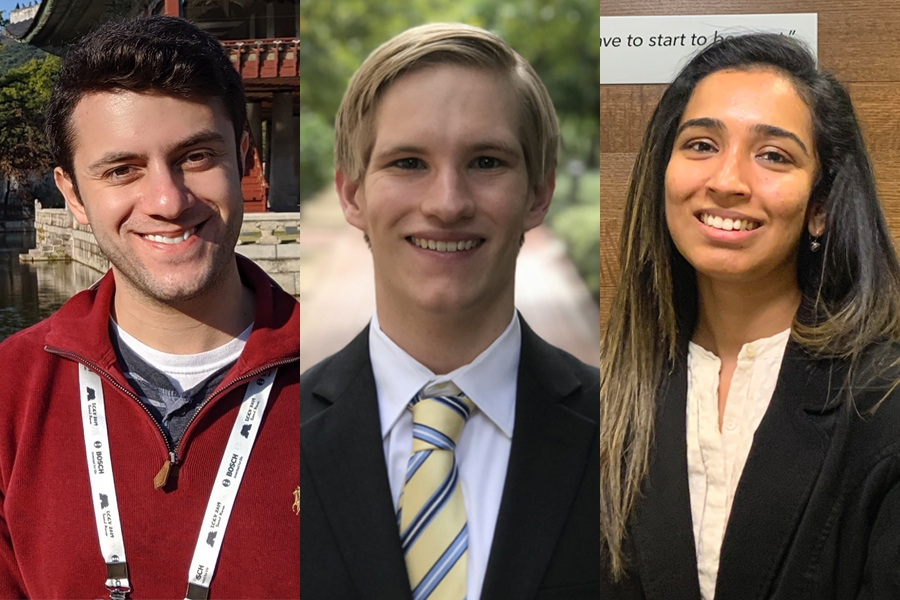
MIT-Pillar AI Collective has announced three inaugural fellows for the fall 2023 semester. With support from the program, the graduate students, who are in their final year of a master’s or PhD program, will conduct research in the areas of artificial intelligence, machine learning, and data science with the aim of commercializing their innovations.
Launched by MIT’s School of Engineering and Pillar VC in 2022, the MIT-Pillar AI Collective supports faculty, postdocs, and students conducting research on AI, machine learning, and data science. Supported by a gift from Pillar VC and administered by the MIT Deshpande Center for Technological Innovation, the mission of the program is to advance research toward commercialization.
The fall 2023 MIT-Pillar AI Collective Fellows are:
Alexander Andonian SM ’21 is a PhD candidate in electrical engineering and computer science whose research interests lie in computer vision, deep learning, and artificial intelligence. More specifically, he is focused on building a generalist, multimodal AI scientist driven by generative vision-language model agents capable of proposing scientific hypotheses, running computational experiments, evaluating supporting evidence, and verifying conclusions in the same way as a human researcher or reviewer. Such an agent could be trained to optimally distill and communicate its findings for human consumption and comprehension. Andonian’s work holds the promise of creating a concrete foundation for rigorously building and holistically testing the next-generation autonomous AI agent for science. In addition to his research, Andonian is the CEO and co-founder of Reelize, a startup that offers a generative AI video tool that effortlessly turns long videos into short clips — and originated from his business coursework and was supported by MIT Sandbox. Andonian is also a founding AI researcher at Poly AI, an early-stage YC-backed startup building AI design tools. Andonian earned an SM from MIT and a BS in neuroscience, physics, and mathematics from Bates College.
Daniel Magley is a PhD candidate in the Harvard-MIT Program in Health Sciences and Technology who is passionate about making a healthy, fully functioning mind and body a reality for all. His leading-edge research is focused on developing a swallowable wireless thermal imaging capsule that could be used in treating and monitoring inflammatory bowel diseases and their manifestations, such as Crohn’s disease. Providing increased sensitivity and eliminating the need for bowel preparation, the capsule has the potential to vastly improve treatment efficacy and overall patient experience in routine monitoring. The capsule has completed animal studies and is entering human studies at Mass General Brigham, where Magley leads a team of engineers in the hospital’s largest translational research lab, the Tearney Lab. Following the human pilot studies, the largest technological and regulatory risks will be cleared for translation. Magley will then begin focusing on a multi-site study to get the device into clinics, with the promise of benefiting patients across the country. Magley earned a BS in electrical engineering from Caltech.
Madhumitha Ravichandra is a PhD candidate interested in advancing heat transfer and surface engineering techniques to enhance the safety and performance of nuclear energy systems and reduce their environmental impacts. Leveraging her deep knowledge of the integration of explainable AI with high-throughput autonomous experimentation, she seeks to transform the development of radiation-hardened (rad-hard) sensors, which could potentially withstand and function amidst radiation levels that would render conventional sensors useless. By integrating explainable AI with high-throughput autonomous experimentation, she aims to rapidly iterate designs, test under varied conditions, and ensure that the final product is both robust and transparent in its operations. Her work in this space could shift the paradigm in rad-hard sensor development, addressing a glaring void in the market and redefining standards, ensuring that nuclear and space applications are safer, more efficient, and at the cutting edge of technological progress. Ravichandran earned a BTech in mechanical engineering from SASTRA University, India.
Angela Belcher delivers 2023 Dresselhaus Lecture on evolving organisms for new nanomaterials
“How do we get to making nanomaterials that haven’t been evolved before?” asked Angela Belcher at the 2023 Mildred S. Dresselhaus Lecture at MIT on Nov. 20. “We can use elements that biology has already given us.”
The combined in-person and virtual audience of over 300 was treated to a light-up, 3D model of M13 bacteriophage, a virus that only infects bacteria, complete with a pull-out strand of DNA. Belcher used the feather-boa-like model to show how her research group modifies the M13’s genes to add new DNA and peptide sequences to template inorganic materials.
“I love controlling materials at the nanoscale using biology,” said Belcher, the James Mason Crafts Professor of Biological Engineering, materials science professor, and of the Koch Institute of Integrative Cancer Research at MIT. “We all know if you control materials at the nanoscale and you can start to tune them, then you can have all kinds of different applications.” And the opportunities are indeed vast — from building batteries, fuel cells, and solar cells to carbon sequestration and storage, environmental remediation, catalysis, and medical diagnostics and imaging.
Belcher sprinkled her talk with models and props, lined up on a table at the front of the 10-250 lecture hall, to demonstrate a wide variety of concepts and projects made possible by the intersection of biology and nanotechnology.
2023 Mildred S. Dresselhaus Lecture: Angela Belcher
Video: MIT.nano
Energy storage and environment
“How do you go from a DNA sequence to a functioning battery?” posed Belcher. Grabbing a model of a large carbon nanotube, she explained how her group engineered a phage to pick up carbon nanotubes that would wind all the way around the virus and then fill in with different cathode or anode materials to make nanowires for battery electrodes.
How about using the M13 bacteriophage to improve the environment? Belcher referred to a project by former student Geran Zhang PhD ’19 that proved the virus can be modified for this context, too. He used the phage to template high-surface-area, carbon-based materials that can grab small molecules and break them down, Belcher said, opening a realm of possibilities from cleaning up rivers to developing chemical warfare agents to combating smog.
Belcher’s lab worked with the U.S. Army to produce protective clothing and masks made of these carbon-based virus nanofibers. “We went from five liters in our lab to a thousand liters, then 10,000 liters in the army labs where we’re able to make kilograms of the material,” Belcher said, stressing the importance of being able to test and prototype at scale.
Imaging tools and therapeutics in cancer
In the area of biomedical imaging, Belcher explained, a lot less is known in near-infrared imaging — imaging in wavelengths above 1,000 nanometers — than other imaging techniques, yet with near-infrared scientists can see much deeper inside the body. Belcher’s lab built their own systems to image at these wavelengths. The third generation of this system provides real-time, sub-millimeter optical imaging for guided surgery.
Working with Sangeeta Bhatia, the John J. and Dorothy Wilson Professor of Engineering, Belcher used carbon nanotubes to build imaging tools that find tiny tumors during surgery that doctors otherwise would not be able to see. The tool is actually a virus engineered to carry with it a fluorescent, single-walled carbon nanotube as it seeks out the tumors.
Nearing the end of her talk, Belcher presented a goal: to develop an accessible detection and diagnostic technology for ovarian cancer in five to 10 years.
“We think that we can do it,” Belcher said. She described her students’ work developing a way to scan an entire fallopian tube, as opposed to just one small portion, to find pre-cancer lesions, and talked about the team of MIT faculty, doctors, and researchers working collectively toward this goal.
“Part of the secret of life and the meaning of life is helping other people enjoy the passage of time,” said Belcher in her closing remarks. “I think that we can all do that by working to solve some of the biggest issues on the planet, including helping to diagnose and treat ovarian cancer early so people have more time to spend with their family.”
Honoring Mildred S. Dresselhaus
Belcher was the fifth speaker to deliver the Dresselhaus Lecture, an annual event organized by MIT.nano to honor the late MIT physics and electrical engineering Institute Professor Mildred Dresselhaus. The lecture features a speaker from anywhere in the world whose leadership and impact echo Dresselhaus’s life, accomplishments, and values.
“Millie was and is a huge hero of mine,” said Belcher. “Giving a lecture in Millie’s name is just the greatest honor.”
Belcher dedicated the talk to Dresselhaus, whom she described with an array of accolades — a trailblazer, a genius, an amazing mentor, teacher, and inventor. “Just knowing her was such a privilege,” she said.
Belcher also dedicated her talk to her own grandmother and mother, both of whom passed away from cancer, as well as late MIT professors Susan Lindquist and Angelika Amon, who both died of ovarian cancer.
“I’ve been so fortunate to work with just the most talented and dedicated graduate students, undergraduate students, postdocs, and researchers,” concluded Belcher. “It has been a pure joy to be in partnership with all of you to solve these very daunting problems.”
God Of War Ragnarök’s Valhalla Is So Much More Than Just A Roguelite DLC
Since rolling credits (and platinum-ing) God of War Ragnarök shortly after its release last year, I have craved more of developer Santa Monica Studio’s take on Norse mythology. I was satisfied with how the story wrapped up, although admittedly, I would have liked a more bombastic finale worthy of the name “Ragnarök,” so I wasn’t necessarily looking for new story content just yet. I was fine to wait for a sequel years down the road, perhaps with Kratos and Atreus traversing through a new line of mythological lands and gods. But I wanted some reason to return to its beautiful world, adrenaline-inducing combat, and top-tier characters.
[embedded content]
When PlayStation revealed Ragnarök’s Valhalla DLC, I was immediately excited. A free DLC dropping less than a week after its reveal featuring a new roguelite structure on top of the game’s already stellar combat? Sign me up! With just that trailer to go off of, I fully expected Valhalla to be just that – a roguelite mode to partake in more of Ragnarök’s combat. However, after three hours with the DLC, I am blown away. Not only is it a full-featured roguelite mode starring Kratos and trusty companion Mimir, with excellent arenas and tantalizing upgrades and strategic decision-making t, but it’s a story I didn’t know I wanted.
Spoilers Below For The First Few Hours of Ragnarök’s Valhalla DLC
Valhalla starts immediately – there’s no bridge between the ending of Ragnarök and this DLC. It’s just Kratos and Mimir on a small boat rowing toward Valhalla. Unlike other depictions of this mystical realm, like in Assassin’s Creed Valhalla, Santa Monica Studio doesn’t paint it with sunlight, rainbows, gold, ales-a-plenty, and celebration. Instead, it’s a spooky land, bathed in fog and mystery. And, as you soon find out after entering its doors, it transforms based on who has entered it. In this instance, it becomes what I can only imagine is a nightmare for Kratos. All nine Norse realms come together to create combat arena after combat arena, with pockets of exploration for Kratos to venture through on a journey against his mind.
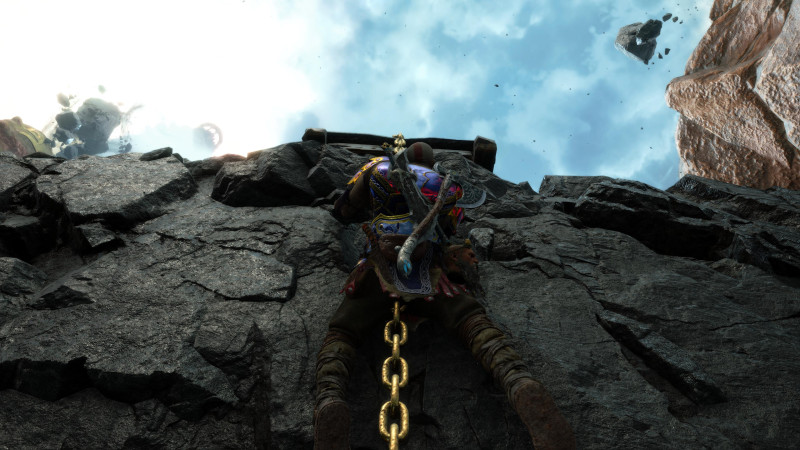
It’s here where Valhalla’s purpose becomes clear. It’s not a new DLC to give players a chance to experience the game’s combat in roguelite fashion (although it certainly does that); it’s an opportunity to provide a glimpse into the mind of Kratos, after all he’s been through in the events of Ragnarök, 2018’s God of War, and even the Greek entries before them. In the modern games, we see Kratos come to terms with his new life, his son, and his role in this Norse world. Those adventures only touch on his history, mainly to compare how far he’s come, but in Valhalla, Kratos must come face to face with his past choices.
He encounters the Sun God, Helios, whom Kratos infamously decapitated shortly after receiving help from the deity in 2010’s God of War III.
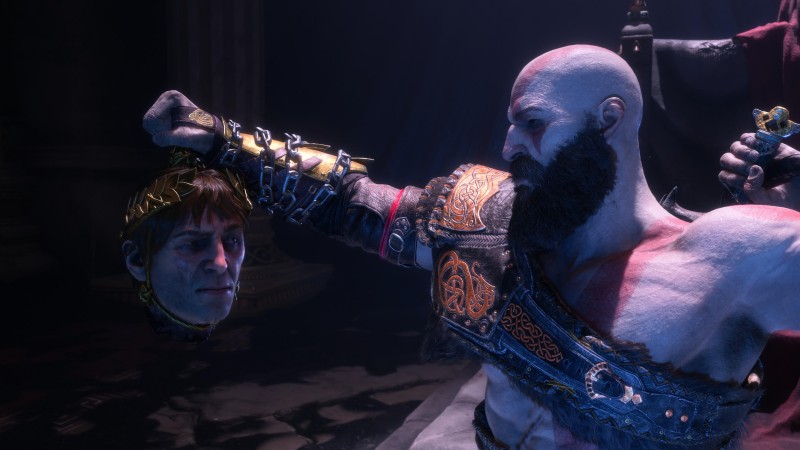
It has tortured Kratos all these years, we learn, and Valhalla is pushing him to come to terms with that decision, Helios, and how he might tackle that type of conflict today. With Helios introduced, Valhalla also brings Kratos to Greek realms for combat, where he fights new enemies (for the Norse entries in the series, at least) like legionnaires, minotaurs, sirens, and more.
What’s most fascinating for me, as someone who still has not played any of the Greek God of War games, is that I’m getting a glimpse into what those stories did to Kratos. Having loved God of War and Ragnarök, I was satisfied with the parts of Kratos’ history that they touched on and didn’t feel I needed more. But now, a few hours into Valhalla, I’m thoroughly enjoying these touchstones to his past I’m receiving, and it’s coloring the Kratos I know in a new light.
That I’m getting all of this additional story content, which itself is an excellent epilogue to the events of Ragnarök in ways I haven’t mentioned here, plus a well-crafted roguelite spin on one of my favorite combat systems this generation, for free is almost bewildering. Don’t get me wrong – I’m happy it’s free and delivering so much “new” to a game I already love – but PlayStation could have easily charged for this.
If anything, it paints the publisher’s decision to charge $49.99 (or $9.99 to upgrade if you already own it on PlayStation 4) for the upcoming remaster of The Last of Us Part II, which includes the roguelite No Return mode, a bit more painful. As someone primarily interested in the remaster for the new roguelite mode, having beaten the campaign twice already, I’m questioning whether the $9.99 upgrade fee will be worth it when Valhalla delivers so much in the same vein for free.
[embedded content]
But that’s a debate for another day.
What’s not a debate is that Ragnarök’s Valhalla is so much more than just roguelite DLC; it’s essential content for the God of War series and Kratos’ journey thus far.
Are you playing God of War Ragnarok’s Valhalla DLC? Let us know what you think of it in the comments below!
Enchantment, Esteem, And Eulogies
Introduction
“Do you miss E3 in-person events?” Geoff Keighley reads calmly.
It would not have been, all things considered, an unusual question to ask one of the game industry’s leading personalities. The Entertainment Software Association’s Electronic Entertainment Expo, better known as E3, has long been a dominating feature of the summer. But in the wake of the COVID-19 pandemic, the ESA hasn’t been able to open the doors to the highly regarded in-person convention.
However, Keighley is the driving force behind Summer Game Fest, a newly established but increasingly successful showcase effectively competing with E3. The query came from one of the many viewers who tuned in to see him speak candidly on YouTube following the Xbox/Bethesda showcase, one of Summer Game Fest’s crowning jewels. Keighley’s answer notably dropped any mention of the ESA’s show.
Admittedly, talking about the rival event and the current, contentious shape of the summer showcases is a strange way to begin a look back at the renowned show. But, curiously, the question above underscores just how impactful E3 has been for the game industry. Without the apparent intention to slight Summer Game Fest’s producer, the viewer conflates the idea of a summer gaming convention with E3. The question concisely articulates what the show still means to many: a traditional, inevitable, and unshakable mainstay of the industry’s yearly agenda – even if E3 has undergone cancellations, adjustments, criticisms, and competition in the last few years. Despite its recent stumbles, the expo continues to hold on to its carefully cultivated clout, which goes back decades.
Foundations of Gaming’s Biggest Show

Foundations of Gaming’s Biggest Show
The first E3 took place in 1995. Some might argue the Game Developers Conference (GDC), first held in a California living room back in 1988, can claim a longer history, but GDC didn’t coalesce into the shape we recognize today until 1996, the same year as the first Tokyo Game Show. Other current popular game-centric events, like PAX and Gamescom, didn’t hit the scene until the early 2000s. And according to Kinda Funny co-founder and one-time E3 host Greg Miller, that long legacy is what makes the show gaming’s biggest.
“What makes E3 such an event is its history,” Miller tells Game Informer. “E3’s reputation precedes itself. And it grew by leaps and bounds because the more people would talk about it or report on it, the more people would read that. And then the more people would be inspired [to say], ‘Oh, I want to go to that.’”
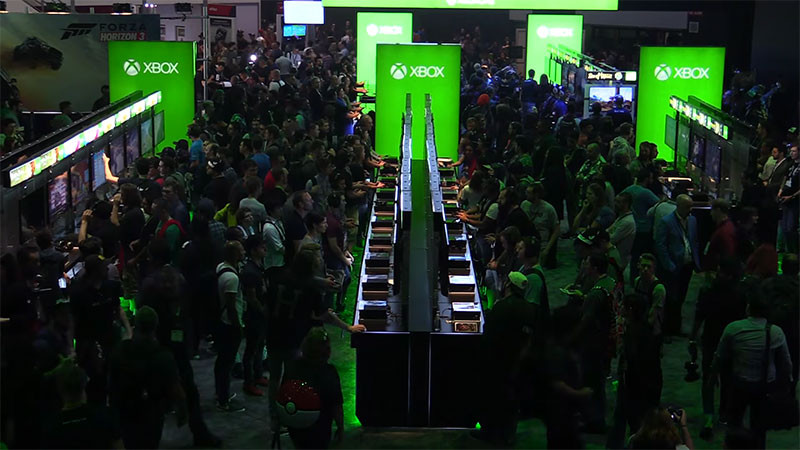
It’s hard to argue with him. E3 has been around for 27 years, meaning an entire generation of gamers have never lived in a world where the show didn’t exist. Many up-and-coming game journalists entered the profession hoping to cover the expo. It was the industry’s white whale. And numerous veteran writers still recall the excitement of its rise, realizing their niche hobby was jumping into the wider consciousness.
“I remember getting that first E3 badge and being like, ‘Oh my gosh, I’ve made it,’” Miller recalls. That was 15 years ago when he was still writing for IGN. But despite the many conventions Miller would later attend, he explains the ESA’s show had an element of magic. “E3 was always this event where the excitement was crackling,” he says. And he’s not the only recognizable personality with long-time veneration for the convention.
“22 years ago, I walked into the first E3 as a wide-eyed 15-year-old kid who didn’t quite know his place in the world. E3 Expo brought my hobby out of my computer and into mainstream culture,” writes Geoff Keighley. The expo’s future competitor used this line in 2017 to introduce the world to his new, interview-focused E3 offering, the E3 Coliseum. Its panels brought developers, publishers, industry insiders, and more together to dive deep into some of gaming’s most anticipated projects.
“To be honest,” Keighley continues, “the spectacle of E3 convinced me that I should devote my career to this incredible medium.” The allure of the busy show floor and spotlighted stage wasn’t limited to just video game media; it attracted people from every corner of the industry.
Magic On and Off the Stage
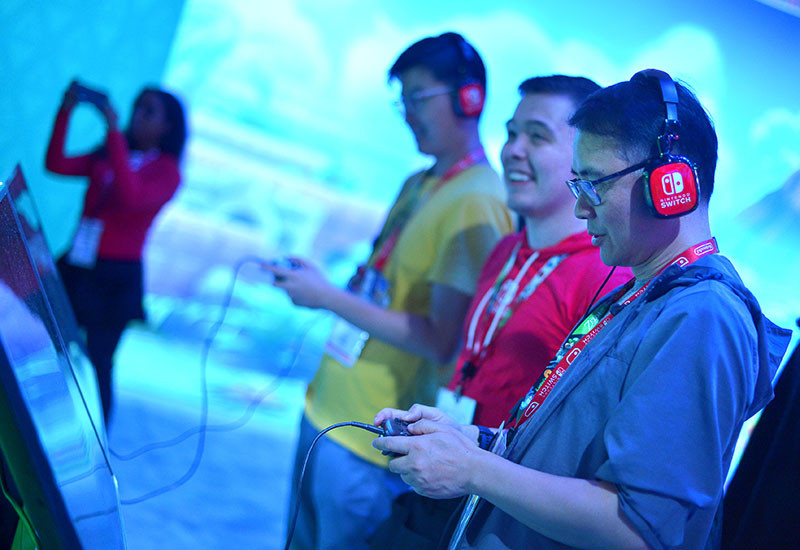
Magic On and Off the Stage
Though now retired, former Nintendo of American president Reggie Fils-Aimé is one of the industry’s most recognizable faces and no stranger to the E3 stage. In a recent interview with Game Informer’s Brian Shea, he reminisced over his introduction to the show with the famous words, “My name is Reggie. I’m about kicking ass, I’m about taking names, and we’re about making games.” It was a moment that not only endeared him to the gaming audience at large but also underscored how unexpected, compelling, and influential the live shows could be. Fils-Aimé became an almost overnight sensation, proving E3’s stage was the place where a personality-laden speaker could make a powerful impression on gamers.
Thanks to new technologies, the overflowingly popular shows were beginning more and more to aim directly at the target fanbase. This shift helped make gaming executives – like Mario creator Shigeru Miyamoto, who came out wielding the Master Sword the same year as Fils-Aimé’s debut – and their products household names.
“The reputation of E3 goes hand in hand with the coming up – and I’m old, of course – but the coming up of the internet. It starts from me reading EGM,” recalls Miller, referencing the Electronic Gaming Monthly print magazine that served as many pre-internet gamers’ source of news. “But then it becomes running out of class and going to IGN, going to GameSpot being like, ‘What has gotten announced? What’s happening?’”
With so many new audience members eager to hear the updates spilling out from its stage, the summer showcase rose to even higher prominence. Miller describes E3 as becoming a “giant runaway huge event” unlike any other trade show.
“You’d see Nintendo and PlayStation and Xbox and Konami and everybody side-by-side out there to talk about what they’re doing and really have this thing of, ‘We’ve all agreed, there’s this unspoken contract that this is where we will go, and we will tell you where the next 12 months of gaming are going to take you,’” Miller says. “That’s what made E3 ‘E3.’ It was this idea of the industry coming together to talk about where they’re going.”
While it’s easy to see how that electrified atmosphere could affect viewers, who went away excited for the newly revealed titles, Fils-Aimé explained to Game Informer how the show’s power began transforming things behind closed doors in the industry’s biggest companies. According to Fils-Aimé, his famous debut lines – and the fans’ viral reaction to them – changed the way Nintendo evaluated all future gaming presentations. After 2004, the home of Mario, Zelda, and more started to comb through fans’ online responses to press conferences carefully. It would then incorporate that information into the corporation’s marketing strategy. But while E3 was large enough to affect various facets of the industry, it was far from impervious to the winds of change.
The King is Dead, Long Live the King
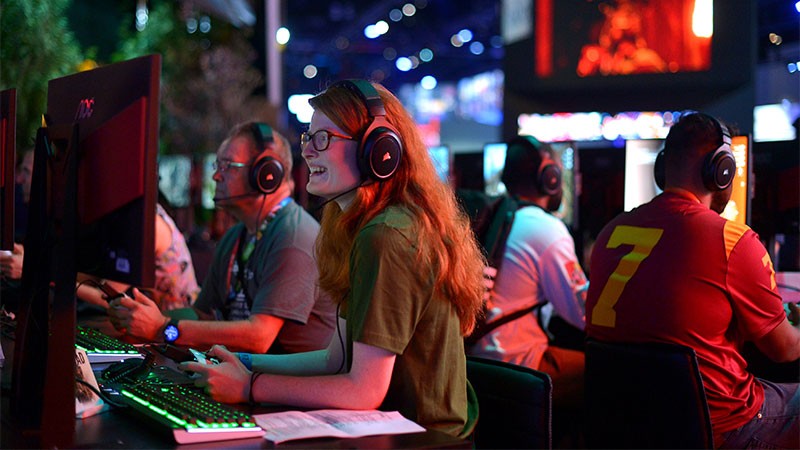
The King is Dead, Long Live the King
Inevitably, any conversation about E3 will feature the participants questioning each other about the first time they attended. I couldn’t resist asking Miller, but it led down an unexpected path. Without delay, he replies that the first E3 he attended was in 2007, following this up with something slightly startling.
“And it’s notable, of course, because it was the year E3 died.”
For such a lively, energetic show, the phrase ‘E3 is dead’ has been a constant refrain. No matter what had happened during the event – awesome reveals, intriguing news, et cetera – someone would declare its certain demise. However, Miller has a pretty good reason for his assertion.
“My first E3 was the Santa Monica E3, where Gamecock had a funeral procession through the streets of Santa Monica for it. And we bounced around to a million different little locations trying to get to it before they were like, ‘You know? This is actually worse. We will bring back E3 the traditional way the next year.’”
In 2008, the organizers brought the, at that point, 13-year-old showcase back to its familiar home in the Los Angeles Convention Center, but it was far from a traditional experience. The past year’s move had been the symptom of the expo’s ongoing identity struggles, not its cause. Hoping to brand itself as a place for the industry’s insiders, the ESA strictly limited E3’s 2008 guest list. Only about 5,000 people walked through the deserted-feeling convention halls, which could easily accommodate ten times that number. The wildly restricted turnout still holds the record for the show’s lowest attendance.
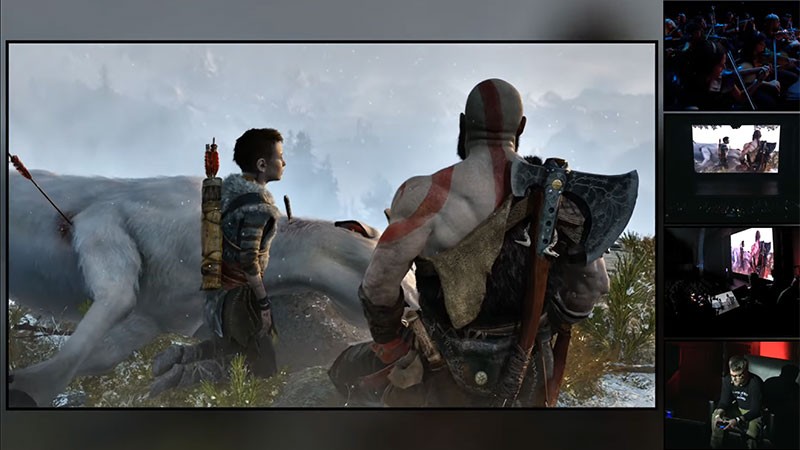
But E3 wasn’t dead, and over the next decade, it became just as popular as ever. Years like 2016, where Sony revealed its God of War reboot, announced Marvel’s Spider-Man, debuted Horizon Zero Dawn gameplay, and more, earned their way into gaming showcase history. E3 began selling an almost record-breaking number of badges every year and, once again experimenting with what it wanted to be, even opened its doors to the public.
Everything changed in 2020. For the first time in its over two-decade life span, E3 was canceled. The abrupt action left an obvious vacuum, which game makers and promoters attempted to fill with their own digital showcases. Trying to adjust to the needs of the time, E3 came back in 2021 as an online-only event, boasting hosts from around the industry, including Greg Miller, Jacki Jing, and Alex “Goldenboy” Mendez. However, the show was again canceled in 2022. Talking with The Washington Post, ESA president and CEO Stan Pierre-Louis recently announced that E3 is set to make a comeback next year.
“We’re excited about coming back in 2023 with both a digital and an in-person event,” Pierre-Louis said. “As much as we love these digital events, and as much as they reach people and we want that global reach, we also know that there’s a really strong desire for people to convene — to be able to connect in person and see each other and talk about what makes games great.”
Despite the CEO’s confidence in E3 and the importance of an in-person convention, it is uncertain if it will be safe to hold a large-scale conference next year. Other shows, like GDC and PAX, have put on physical events, but ensuing COVID cases dogged both. However, it seems like the ESA is going full speed ahead with its plans as it announced a partnership with ReedPop, the company behind New York Comic Con, Star Wars Celebration, and PAX. This unprecedented team-up hints that E3 will continue to move away from its industry-focused image, becoming an event for the public like other gaming conventions when it returns in June 2023. And once again, E3 seems poised to wrestle with its identity, leaving its future unclear.
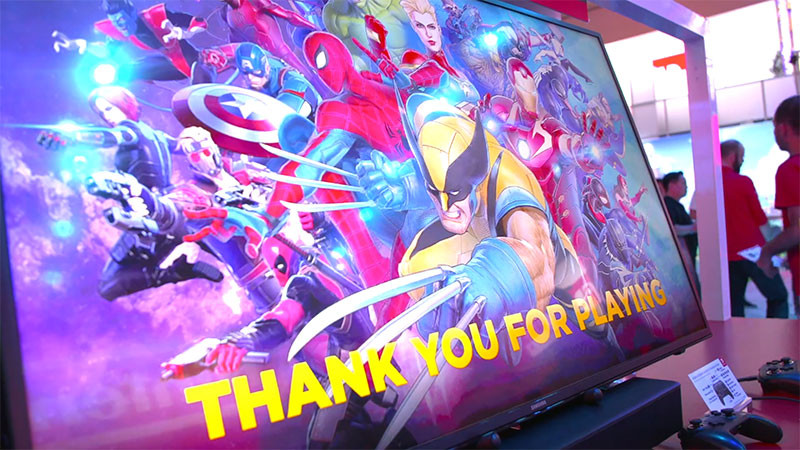
“I don’t know what E3 is anymore,” says Miller when asked if the show is still the grand event it once was. “I think E3 doesn’t know what E3 is anymore. And I think that comes from a multi-front war. You have Geoff Keighley moving in on their turf and doing a great job with Summer Game Fest. You have COVID changing the way the world and the industry work in general. And then you have this show that already was struggling with, ‘Are we for consumers? Are we for the press? Are we for the industry?’ Where does all that net out? I feel like we haven’t seen E3 have the chance to really negotiate that water and figure out what they want to be and what they’re going to become.”
As I speak to him, it seems like the Kinda Funny co-founder would accept a new era of summer showcases. However, gaming’s long-time ‘biggest show’ isn’t ready to relinquish its crown, and Miller is still cheering it on.
“I would be heartbroken if E3 went away,” he says. “I think for all its warts and problems, E3 is something special, both for the people who attend and the audience back home watching. I love E3, and I want it to succeed. But I want E3 to succeed doing the right thing. I don’t want it to just exist to exist. I want it to exist because it’s benefiting the industry, the fans, the publishers, the developers, you name it. It needs to work for everybody.”
Greg Miller On E3 And His Career
This article originally appeared in Issue 348 of Game Informer.

